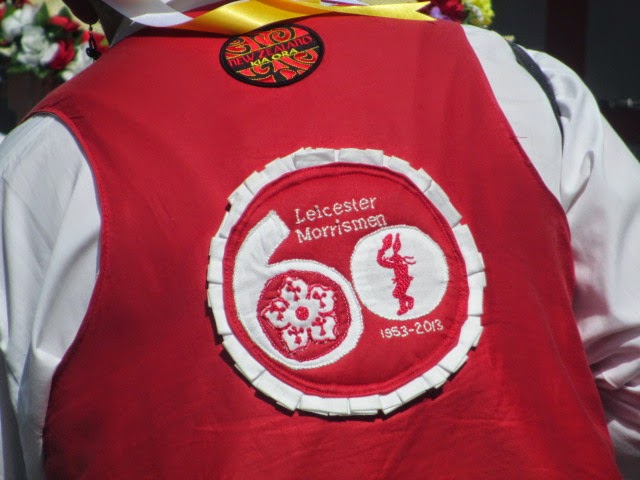Introducing its vintage picture of the day on 23 April, the Leicester Mercury said:
So. This was the plan. We'd dig out a spiffy old photo of St George's Day in Leicester, bash out a few bruised lines wondering why it isn't a bank holiday in England, then slink off early to the pub. Job's a good 'un. Well, a passable one, at least.
But here's the thing. We couldn't find many old pics of St George's Day. And none that we muster much enthusiasm for showing you.So instead they printed a picture of St George's Street in the days before most of the buildings were felled to build the newspaper's current headquarters.
I am not surprised the Mercury had trouble finding St George's Day photographs. I can recall it being a big deal when I was in the Cubs, and you might see a church flying St George's flag, but that was about it.
Things are different these days. I was in Leicester today, in part to see the city's St George's Festival.
With its morris dancers, knights and dragons, there was perhaps something contrived about the whole affair. But I was pleased to see it taking place for two reasons.
First, there is variety of left-wing multiculturalism that tends to celebrate every culture except its own. Culture becomes defined as something that whites, particularly the white working class, do not have.
So is good to see St George taking his place alongside Vaisakhi, Diwali and Hannukah in Leicester's roster of municipally recognised festivals.
And perhaps the idea that other people's festivals are authentic while yours are contrived is part of the same faulty view of multiculturalism. After all, every festival was invented if you go back far enough.
Second, if people of goodwill do not take up 23 April, then others will.
In 1979 the National Front staged a march of around 1000 people in Leicester on St George's Day. There were clashes with anti-fascist demonstrators, 40 injuries and 80 arrests.
Even if you don't care for morris dancing, you have to admit it preferable to a National Front march.






No comments:
Post a Comment